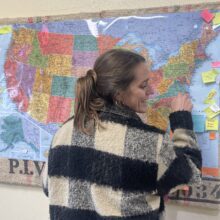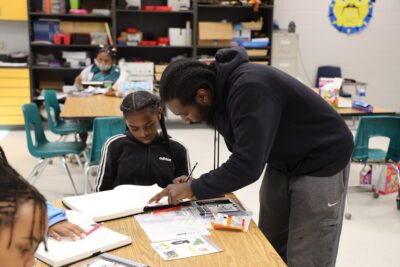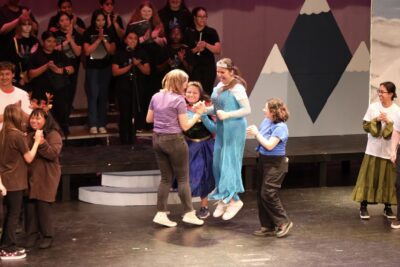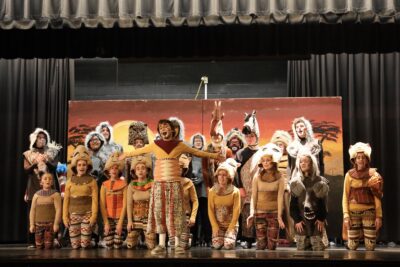|
|
“Did we talk about this one? What do y’all see?” asked artist Senora Lynch to a room full of seventh graders at Midway Middle School. As Lynch held up a piece of her pottery, responses started flying from students — lighting bolts, stars, leaves, arrows, corn!
Lynch encouraged the open dialogue, validating their answers while continuing to ask questions.
“This is all about our hands. Can your hands heal?” she wondered aloud.
Students continued to engage, giving examples of how doctors use their hands and how we can use ours to plant things in the ground.
Holding her hand up to a student to signal a high-five, the ceramist said, “We can heal with our hands, right? We can pat somebody on the back. You ever hug your mama and she says ‘Oh I feel better today?'”
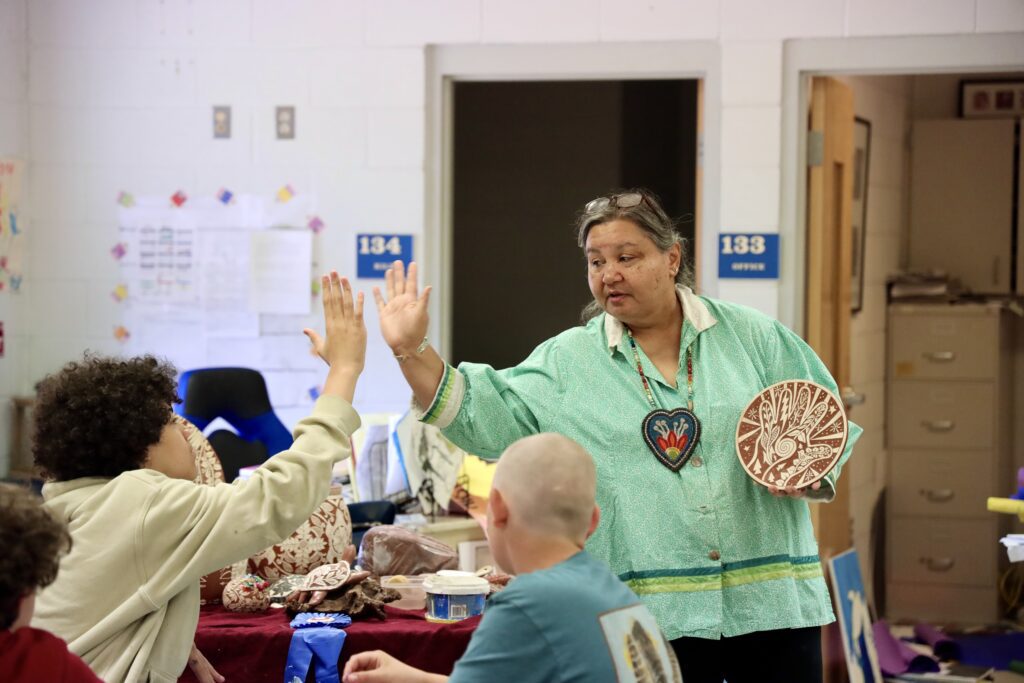
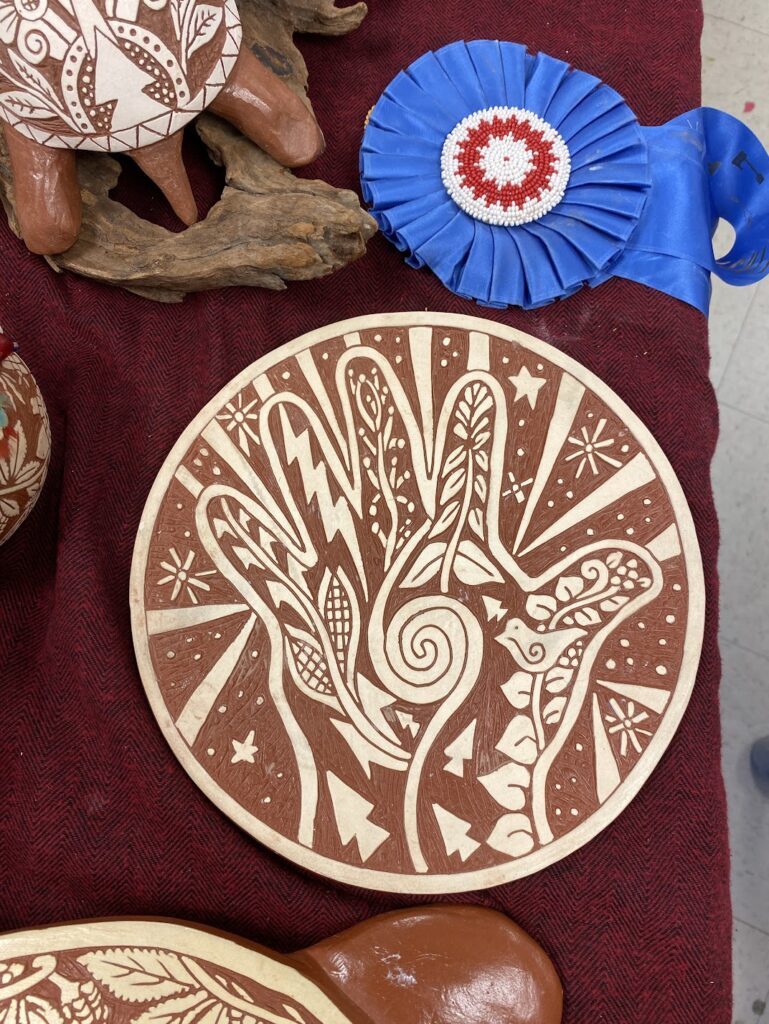
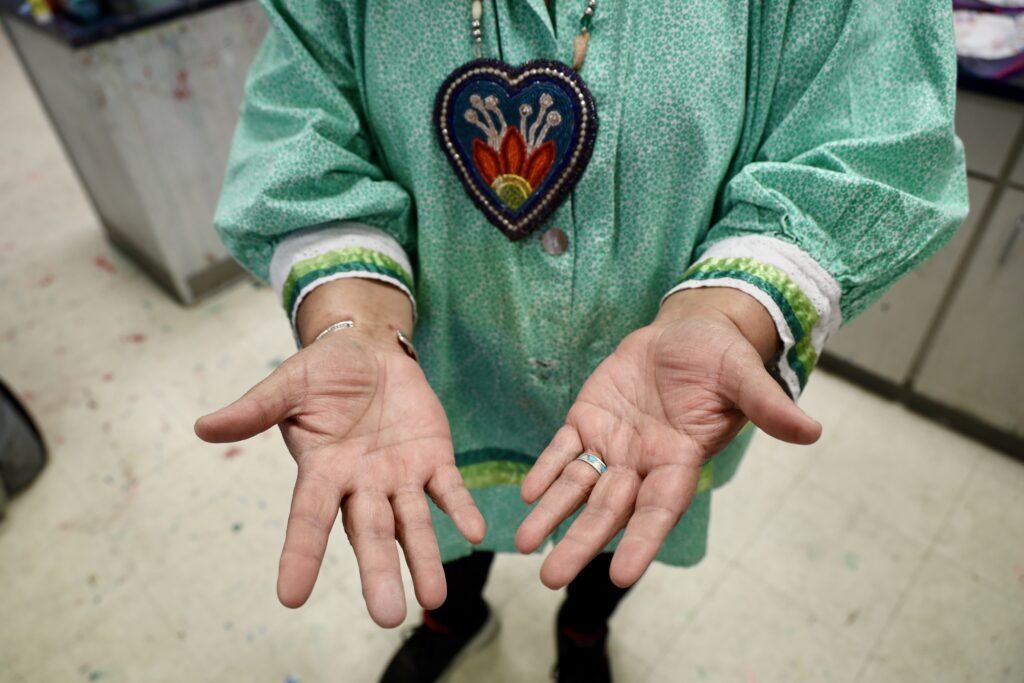
Lynch is a member of the Haliwa-Saponi tribe and lifelong artist. She knows the importance of her hands, and she honors her people and family through them with her work as a ceramist. Her pottery sits in the Smithsonian’s National Museum of the American Indian, and for this week, in Midway Middle School’s art classroom.
“We are gifted, we can create, we can invent, we can come up with new ideas. Our hands are very powerful.”
Senora Lynch, Haliwa-Saponi artist

Bringing her into the classroom is the Artists in Schools program out of the Sampson Arts Council. Lynch worked with 100 sixth and seventh graders through this week-long residency, teaching pottery and sharing her history, as well as the culture of her tribe.
This local arts council is always striving to support schools by bringing more art opportunities and exposure into the classroom. It is the third year officially of The Artists in Schools program, thanks to a grant from the Anonymous Trust.
Kara Donatelli, executive director of the Sampson Arts Council, works with art educators to align their wants with the professionals brought in for the program. This year, they focused their efforts on local middle schools.
Hobbton Middle School had visiting artist Leni Newell, whose project combined art and literacy, using mixed media to create banners for the school’s library. Sampson Middle School had multiple student workshops with a performance by the Fayetteville Symphony Orchestra. Union Middle School students were treated to a performance by Andes Manta and a workshop where the band taught students how to make and play panpipes.
The Sampson Arts Council and Donatelli constantly work to support their community through the arts. She visited Lynch in the classroom and believes she “is really one of a kind.”
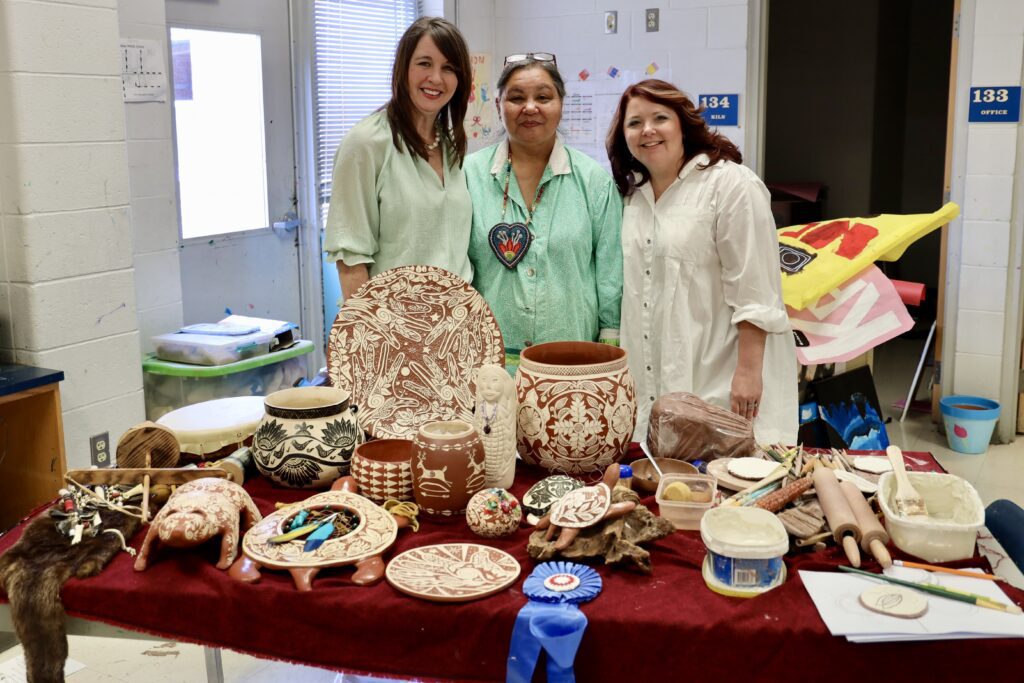
For the students at Midway Middle, this may be the first time some of them have touched clay. During the residency, they are learning about three-dimensional art and carving away clay to create a raised surface. This is Lynch’s signature style of pottery, and students now know what slip, slabs, and the subtractive method are.
Each student gets their own slab of clay, covered in white slip, to carve a turtle design. Lynch said turtles are many things in her culture.
“Turtles are long life, they’re mother earth, they’re friendship, they’re unity. They’re all about protection,” she told the class. “Most every tribe has some belief in the turtle.”



Students were encouraged by Lynch to go outside, to “push back the grass, and smell the earth.” They were to then use that inspiration as the design on their turtle shells.
Their art educator, Leslie Bowden Stewart, was born and raised in the area and has been at Midway for 17 years. She works in unison with Lynch during the week.
She said at all times, her main priority for the students it is to learn how to construct their own compositions, encouraging the development of their own ideas into art.
“We’re showing them how to etch into the surface, but they’re coming up with their own original works of art,” Stewart said.
Lynch has been to hundreds of schools to talk about clay and build with students over the years. She said sometimes she talks about history, sometimes she talks about art. In this class, she talked about both. She tells stories about her family and why she continues to make pottery.
“I think it’s important to teach, share, and hopefully continue our tradition,” said Lynch.
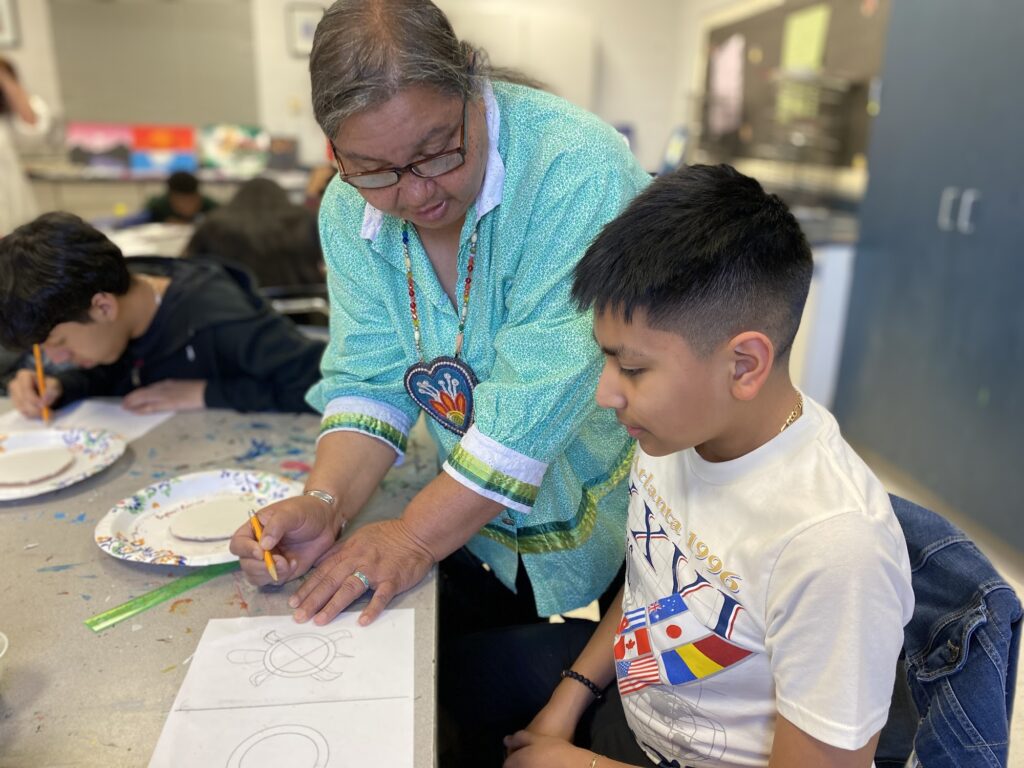
She told the class that her mother always said, “put your spirit in your art.” And before students started etching, Lynch reminded them, “You have to think about what you’re gonna leave and what you’re gonna carve away.”
This is the practice of the subtractive method and what students would eventually do, but it is a larger metaphor, especially coming from Lynch. With her art, she carries on the culture of her people, telling their stories and hers.
“It’s just a joy to work with clay. It’s, in my opinion, magical the things you can do with clay.”
Senora Lynch, member of the Haliwa-Saponi tribe and artist
A piece of Senora Lynch’s pottery can be found among the “To Take Shape and Meaning: Form and Design in Contemporary American Indian Art” exhibit at the North Carolina Museum of Art. Organized by guest curator Nancy Strickland Fields, the exhibit showcases art work from 75 Indigenous artists from over 50 tribes throughout the United States and Canada, including eight from North Carolina. You can see her piece and more at the exhibit until July 28, 2024.
Editor’s note: The Anonymous Trust supports the work of EdNC.
